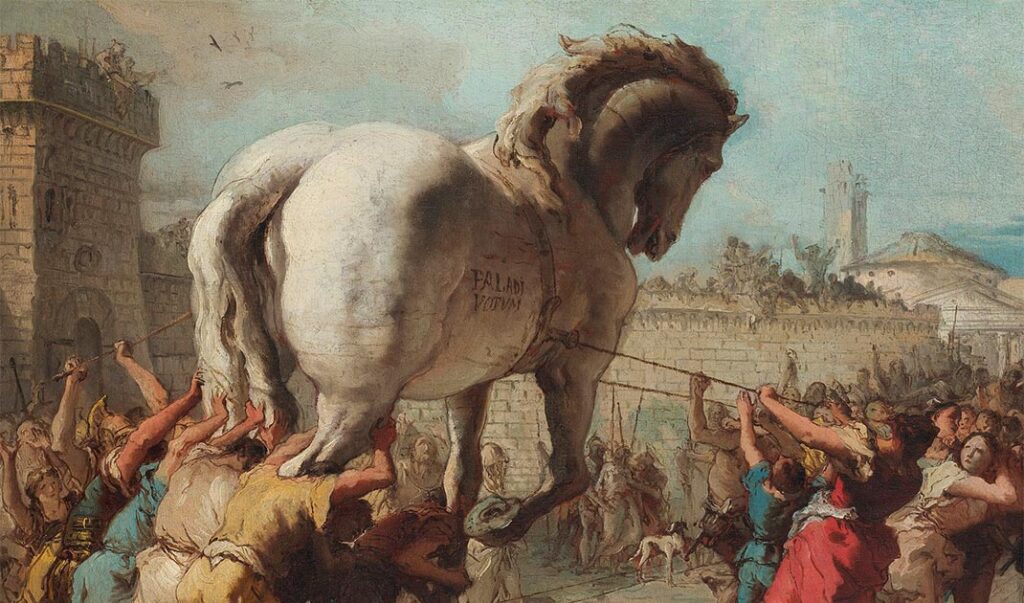This content provides an introduction to the Siege of Troy, one of the most famous and intriguing battles in ancient warfare. It explores the historical background of Troy, the epic tale told in Homer’s The Iliad, and the historical analysis of the event. The article also discusses the tactics employed by ancient civilizations during the siege and its relevance in understanding ancient warfare. While the truth behind every detail of the battle may remain a mystery, the archaeological evidence and references in ancient texts suggest that the Siege of Troy was indeed a real historical event. The enduring fascination with this legendary siege is attributed to its portrayal in The Iliad and its exploration of timeless themes such as heroism and love.
The Siege of Troy: Unraveling the Legendary Battle in Ancient Warfare
Introduction
The Siege of Troy is one of the most famous battles in ancient warfare, immortalized in Homer’s epic poem, The Iliad. This legendary battle has captivated historians, scholars, and enthusiasts for centuries. The stories of heroic warriors, cunning strategies, and tragic love have captured our imagination, but can we separate fact from fiction? In this article, we will unravel the truth behind the Siege of Troy and explore the fascinating world of ancient warfare.
The Historical Background
The city of Troy, also known as Ilium, was located in present-day Turkey. According to archaeological evidence, Troy stood on a strategic location protecting an important trade route between Asia and Europe. The city was continuously inhabited from around 3,000 BCE until its decline in the Late Bronze Age. One of the most significant events in Troy’s history was the legendary siege that occurred around the 12th or 13th century BCE.
The Epic Tale
Homer’s The Iliad tells the story of the siege, focusing primarily on the conflict between Greece and Troy. The war began when Paris, the prince of Troy, eloped with Helen, the wife of Menelaus, the king of Sparta. Menelaus, enraged by this act, called upon his brother, Agamemnon, the king of Mycenae, to lead a Greek expedition against Troy.
The epic poem describes a ten-year-long warfare, showcasing the heroism and struggle of Greek warriors like Achilles, Ajax, and Odysseus. The Greek forces were unable to penetrate the impenetrable walls of Troy, leading to a prolonged stalemate.
Ultimately, it was the cunning strategy of Odysseus that led to the fall of Troy. The Greeks built a gigantic wooden horse, known as the Trojan Horse, and left it outside the city walls as a supposed offering to the gods. The Trojans, unaware that Greek warriors were concealed inside the horse, brought it within the city walls. Under the cover of darkness, the Greek soldiers emerged from the horse and opened the gates for the rest of the Greek army, leading to the downfall of Troy.
Historical Analysis
While The Iliad provides a captivating narrative, historians have long debated the historical accuracy of the epic. The question remains: did the Siege of Troy actually happen? Scholars have sought to uncover the truth by examining various sources, including archaeological findings and other ancient texts.
Archaeological excavations at the site of Troy, led by Heinrich Schliemann in the late 19th century, revealed the existence of multiple layers of the city, suggesting a historical basis for the Trojan War. The most likely candidate for the Troy of the Iliad is thought to be Troy VII, which was destroyed by fire around the 12th or 13th century BCE.
Additionally, other ancient texts, such as the Hittite records, mention a powerful city located in the same region as Troy, referred to as Wilusa. These records describe a conflict between the Hittites and the Ahhiyawans, possibly the Greeks, which could be interpreted as a reference to the Trojan War.
While it is challenging to separate fact from myth, the prevailing consensus among scholars is that the Siege of Troy was a real historical event, albeit likely embellished in the epic poem. The existence of the city, archaeological evidence, and references in other ancient texts provide compelling support for the historicity of the battle.
Ancient Warfare Tactics
The Siege of Troy offers a glimpse into the strategies employed by ancient civilizations during warfare. The epic poem highlights the use of siege warfare, in which an attacking force surrounds and isolates a city or fortress, cutting off its supplies and weakening its defenses. The Greeks made numerous attempts to breach the walls of Troy, employing various methods such as battering rams and siege towers.
Another tactic showcased in The Iliad is the use of chariots in battle. Chariots, driven by skilled warriors, were a formidable force in ancient warfare. Their mobility and speed allowed them to effectively carry out hit-and-run attacks, causing chaos among enemy ranks.
The Trojan Horse, the ultimate deception in the Siege of Troy, demonstrates the strategic ingenuity of the Greeks. Deceptive tactics were not uncommon in ancient warfare, with armies often resorting to trickery and subterfuge.
Conclusion
The Siege of Troy continues to captivate our imagination due to its legendary status and its portrayal in Homer’s The Iliad. While we may never know the complete truth behind every detail of the battle, the archaeological evidence and other ancient texts provide strong support for the historicity of the event.
This legendary siege serves as a valuable window into ancient warfare, highlighting the strategic tactics, the heroism of warriors, and the complexities of siege warfare. The stories of the Siege of Troy remind us of the enduring human fascination with epic battles, heroes, and the timeless themes of love, betrayal, and sacrifice.
